
Featured Blog | This community-written post highlights the best of what the game industry has to offer. Read more like it on the Game Developer Blogs or learn how to Submit Your Own Blog Post
Run, Jump and Climb: Designing Fun Movement in Games
Moving a character is so common in games that players and designers often take it for granted. However, while it can be tempting to use the default movement options in a game engine, designing great movement can make simply controlling a character fun


The following article is a reproduction, and has been modified for this site. The original article, and many more, can be found at RemptonGames.com
In video games there are few things as fundamental as moving your character around the screen. Whether it’s 2D or 3D, a shooter or an RPG, most games will put the player in control of a character that then has to walk, run, jump or fly around the screen.
Because moving around seems so basic, and it appears in so many games, that it can be easy to ignore just how important this aspect of a game is. However, I believe that the basic controls of your character can actually be one of the most important parts of making a fun and engaging game.
Because players will spend so much time moving their characters around the world of your game they are very sensitive to how it feels. If the movement mechanics are inherently fun then players will get a lot more enjoyment out of your game. If they aren’t, it is at best a missed opportunity and at worst can negatively affect the player experience. Players may not always be able to explain exactly why the controls feel wrong to them, but that doesn’t mean they won’t notice.
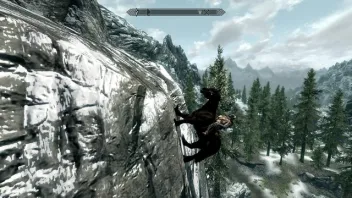
Something seems wrong, but I can’t put my finger on it…
In this article I am going to be talking all about movement mechanics. I will look at some examples of particularly good or bad movement mechanics in games, and why they succeed / fail. I will then go over some of the most important fundamental aspects of designing a good movement system.
The Good, The Bad and the Bugly
First, let’s look at some great examples of fun movement in recent games. In the last few years there are two games that really stand out to me the most for their engaging movement – Super Mario Odyssey and Marvel’s Spider-man. The movement mechanics in these two games are quite different, but they both work to make the basic act of controlling a character an enjoyable experience.
In Super Mario Odyssey players are presented with a smorgasbord of fun movement options. As regular Mario players can run, long-jump, backflip, wall-jump, roll, and even use his hat as a platform to reach difficult areas. And that is without even getting into all of the different creatures that Mario can possess in this game, and the dozens of additional options that those bring.
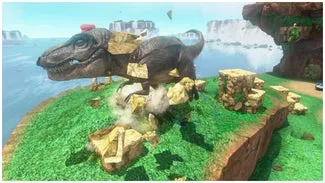
https://www.youtube.com/watch?v=AEsOok-mJZg
Most of Mario’s basic movement options in this game are taken directly from the classic Super Mario 64, which set a completely new standard for video game movement when it was first released. That was no accident – when Super Mario 64 was in development Shigeru Miyamoto would often spend hours at a time controlling Mario in a blank room just making sure that the movement felt right.
Marvel’s Spider-man, on the other hand, has a very different set of movement options. Spider-man can swing around the city on his iconic webs, zip from point to point, and run along the sides of buildings. As the game goes on you can unlock even more movement options, which allow Spidey to launch himself into the air or automatically parkour over obstacles.
While the movement systems in these two games are quite different from one another, they still have a number of things in common. First, they present the players with a wide array of movement options, as opposed to the standard array of walk/run/jump, with maybe some climbable ladders thrown in. The variety of movement options means that players can come up with creative ways to use the tools available to them, and can make the simple act of moving through the world enjoyable.
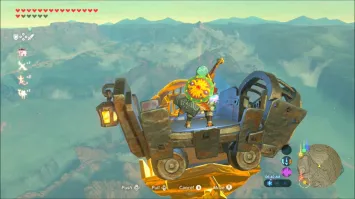
Bonus points if your system lets player come up with their own movement solutions
Second, all of these movement options integrate perfectly with the rest of the game. In Mario’s case, the main theme of the game is exploration and experimentation. Players are rewarded for trying new things and reaching difficult locations, and the variety of moves that Mario has at his disposal greatly lends itself to this feeling of discovery. It is only by trying new things and using every tool in their arsenal that players will be able to locate and acquire all of the hidden moons and secrets in this game.
Spider-man has a very different goal, but its movement system is still a major part of achieving that goal. While the movement system in Spider-man certainly makes it more enjoyable to travel and explore the world of the game, it really shines when mixed with the combat system. Spider-man’s combat system is equally deep, and when combined with your various movement options players are able to perform some truly breathtaking combos.
Players are able to zip from enemy to enemy to take them out with stealth, quickly dodge bombs and throw them back at the enemy, and lift bad guys into the air. You can also swing into enemies to push them off the sides of buildings, bounce off a wall to perform a counterattack, or even launch yourself into the ground to knock down a whole group of enemies at once.
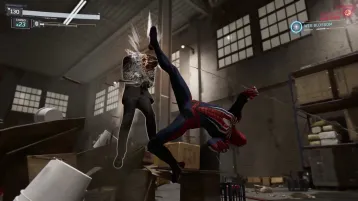
He’s just knocked out…i’m sure he’ll be fine…
Every aspect of these two very different movement systems serve the same goal – make the player feel like they are the character. Whether it’s hopping and flipping around the level as Mario or swinging through buildings as Spider-man, each movement feels completely natural and combos perfectly into the next move.
Finally, both of these movement systems are very responsive. This is probably the most important thing to keep in mind when designing any movement system – when players press a button, they expect an action to happen. If the action takes to long, or doesn’t always do what they expect, it can break the connection between the player and the character on-screen. On the other hand, if the character responds immediately to what the player intends it will create a greater sense of immersion in the game.
These games are not the only ones that have great movement systems. Whether its sneaking like a ninja in Sekiro or climbing everything in Legend of Zelda: Breath of the Wild, great movement systems always add an extra layer of enjoyment to a game. But how does one design such a movement system?
Mechanical Foundations
No matter what type of movement system you put into place, there are a few mechanical criteria that must be met. First, the movement must be responsive. Second, the movement must feel natural and intuitive to the player.
There are some games, such as QWOP, that have intentionally difficult movement systems, but these are far from the norm. For the vast majority of games, players expect to press a button and immediately see their character respond the way that they expect. This may seem obvious, but getting that sort of responsiveness often requires developers to break away from reality in order to feel better on screen.
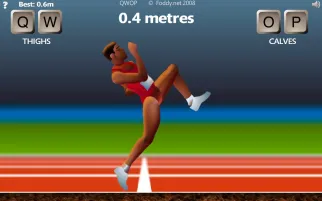
Masochistic game design is a surprisingly popular niche
In general, trying to get your character’s movement to perfectly match how they would move in real life is actually counter-productive. Take jumping for example – nearly every character in video games that has the ability to jump is able to leap at Olympian, if not superhuman, levels. If characters were only able to jump a realistic height or distance it would feel off to most players, who have come to expect these superhuman hops.
At the same time, these unrealistically high jumps often require developers to increase the gravity of their worlds to reduce the amount of time that players spend in the air. If they didn’t, players would spend far longer in the air than they expect, and would generally have less control over their characters. In Super Mario Odyssey, for example, the acceleration of gravity is around 7x that of earth.(Accelerations for other Mario Games can be found here).
In addition to expecting their characters to have superhuman level jumps, players also expect to have a superhuman level of control over the trajectory of the jump. While some games are designed so that players have no control over their character while in the air, these games are a minority. Games that remove control while the player is in the air force players to calculate the trajectory of the jump beforehand and commit to it. These types of controls can be quite punishing, particularly in three dimensions.
Instead, many games allow players at least a small amount of control over their character’s trajectory while in the air. While this control is generally still less than a character would have while on the ground, most games allow players to influence the range and direction of a jump while off the ground.
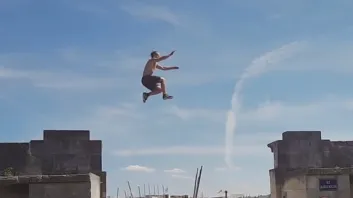
I sure hope he’s holding the forward button….
Another area where good controls often don’t match reality is when running. Physical objects in the real world require time to accelerate – whether this means slowly reaching a maximum speed, slowing down, or simply changing direction. While adding some momentum to your character’s movements can help give them a feeling of weight, it’s important not to add too much. Players expect their characters to turn with a simply rotation of a joystick, and don’t want to wait for their characters to take a realistic amount of time to slow down and change direction.
While other forms of movement are less common, the same mechanical concepts would still apply. Whether you are surfing, web swinging, flying, or driving a motorcycle, keep in mid these two principles. First, good movement in a game responds instantly to the player’s inputs. Second, it is more important that your movement feels fun to control than to be physically accurate.
The Animation Station
While the mechanics are a big part of making your movement feel good to the player, the animations on screen are absolutely vital to the experience as well. Just imagine playing a Mario game where the mechanics are exactly the same, but Mario’s character model was stuck in a T-pose the entire time – it would feel totally wrong. While this is an extreme example, it does help illustrate the idea that the way movement is animated can completely change how it feels to the player.
Super Mario Odyssey is once again a fantastic example of this. Each of Mario’s jumps has a unique animation, and these animations can help you to plan your next moves and string together different jumps. There is something so satisfying about long jumping, throwing your hat, and then diving at it to launch yourself forward, and it’s the animations that help bring these combos to life.
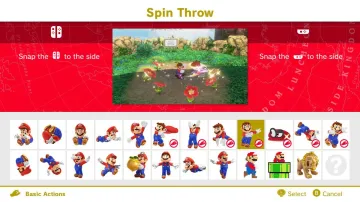
It even comes with this handy-dandy chart!
Similar to the animations, attaching unique sounds to your various movement options can help in a number of ways. First, it can help users with low or no vision navigate the world by identifying the sounds of the different moves. Second, it can help each different move come even further alive in the hands of the player. If you are able to put together a movement system with satisfying mechanics, animations, and sounds, you are well on your way to making a great game.
Until Next Time!
That is all I have for this week. If youenjoyed this article, check out the rest of the blog and subscribe on Twitter, Youtube, or here on WordPress so you will always know when I post a new article. If you didn’t, let me know what I can do better in the comments down below. And join me next week for an article on hidden mechanics in games!
Read more about:
Featured BlogsAbout the Author(s)
You May Also Like







.jpeg?width=700&auto=webp&quality=80&disable=upscale)








